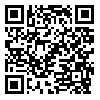BibTeX | RIS | EndNote | Medlars | ProCite | Reference Manager | RefWorks
Send citation to:
URL: http://jmis.hums.ac.ir/article-1-579-en.html


 , Shiva Khoshnoodi
, Shiva Khoshnoodi 

 , Taleb Khodaveisi
, Taleb Khodaveisi 

 , Soheila Saeedi
, Soheila Saeedi 

 , Hamid Bouraghi
, Hamid Bouraghi 

 , Ali Mohammadpour
, Ali Mohammadpour 

 , Behzad Imani
, Behzad Imani 


Introduction: Today, applications are used in various fields, including education. One of the areas where applications have been utilized in education is medical terminology. The aim of this study was to evaluate the quality of applications available for teaching medical terminology.
Methods: This descriptive cross-sectional study was conducted in 2024 in Hamadan province. The present research investigated and evaluated Android-compatible mobile applications available on Cafe Bazaar, which were searched using keywords related to medical terminology. These applications were evaluated using the Mobile Application Rating Scale (MARS) questionnaire. Data analysis was performed using SPSS 26 software, along with Mann-Whitney test and Pearson’s correlation coefficient.
Results: The results of this study showed that 68% of the applications had poor quality, and 28% had acceptable quality. Furthermore, the results indicated a moderate negative correlation between the average quality score of the applications and the number of years since their last update (r=-0.374, P-Value=0.066). However, this correlation was not statistically significant. Additionally, comparing the average quality score of applications in the free and paid groups showed no significant difference between the two groups (P-Value=0.341). In other words, it cannot be confidently stated that free or paid applications have higher quality. Moreover, no difference was observed between the quality of applications developed by personal/commercial and governmental/academic developers (P-Value=0.088).
Discussion: This study revealed that a significant portion of the applications in the examined domain exhibited low quality.
Received: 2025/03/8 | Accepted: 2025/08/3 | Published: 2025/08/20
| Rights and permissions | |
 |
This work is licensed under a Creative Commons Attribution-NonCommercial 4.0 International License. |




 hums.ac.ir
hums.ac.ir